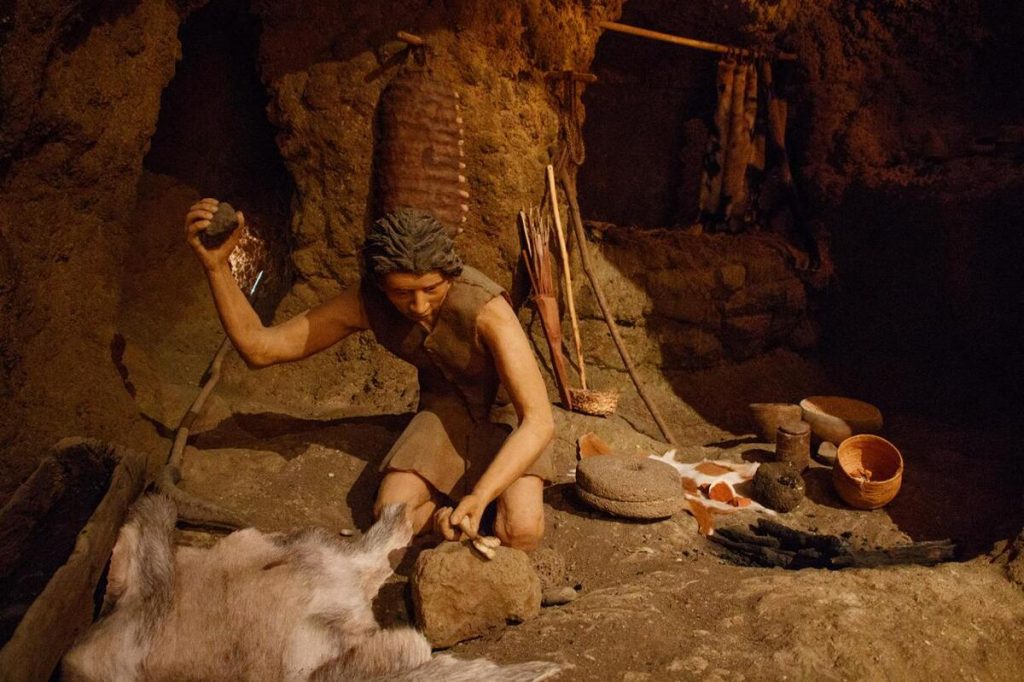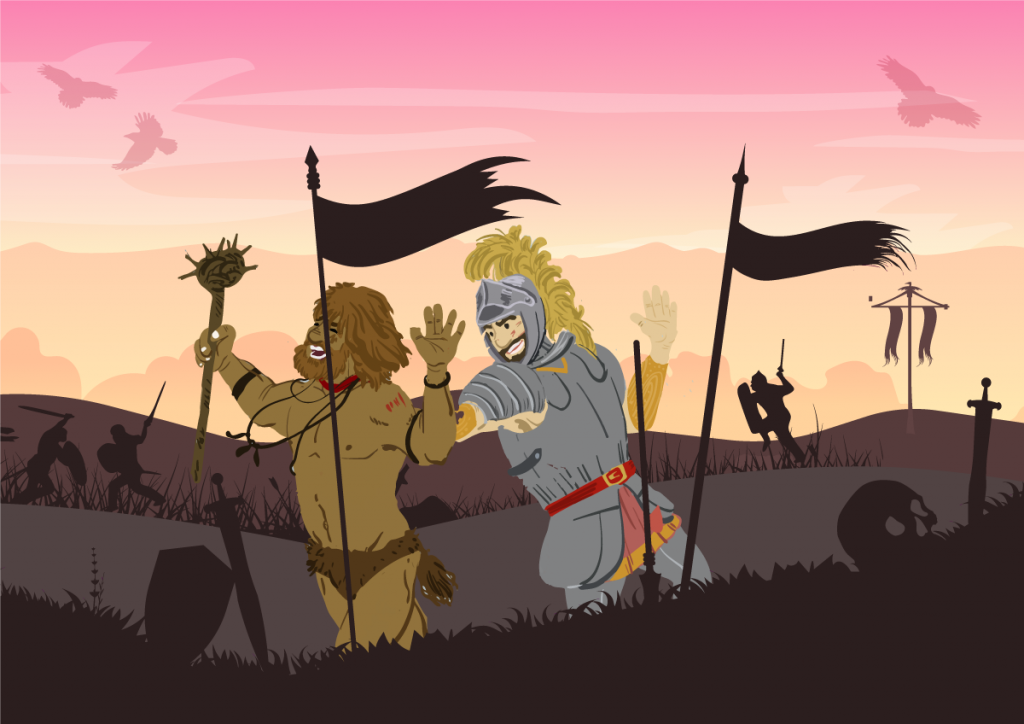Doramas was an aboriginal warrior and warlord from Gran Canaria known for having been one of the main leaders of the resistance against the European conquest of the island undertaken by the Catholic Monarchs for the Crown of Castile in 1478. In this article you will learn about the legend of Doramas and the history of the aborigine of Gran Canaria.
Doramas was of shorn origin, a commoner in the indigenous social hierarchy, his fame as a warrior made him rise socially to become a "guayre" captain and member of the island nobility.
Reputed by all the chronicles of the conquest as a brave, hard-working and rebellious leader, his death in combat against the invading forces was an important loss for the morale of the island's resistance, which is why he was called by the historian José de Viera y Clavijo: "the last of the Canary Islanders".
Who were the Guayres and the Guanartemes?
Before knowing the history of Doramas and the death of this important aborigine of Gran Canaria, it is necessary to know first who were the Guayres and the Guanartemes on the island of Gran Canaria.
The Guanartemes, the aboriginal kings of the island of Gran Canaria
Guanarteme was the term given to the aboriginal chiefs or kings on the island of Gran Canaria before the European conquest in the 15th century. Likewise, guanartemato was the name given to the territories dominated by a guanarteme.
The term guanarteme, of aboriginal origin and which also appears in historical documentation with the spelling guadarteme and guadnarteme, has traditionally been translated as son of Artemi, alluding to the first king of the island.

Traditional sources point to the existence in Gran Canaria at the time prior to the European conquest of two superior territorial demarcations known in modern historiography as guanartematos: that of Gáldar and that of Telde, at the head of each of which there was a guanarteme.
The guanartemes were at the top of the hierarchical aboriginal social structure. For some authors, the position was inherited through matrilineage, with the practice of endogamy among the members of the "royal" family. For Celso Martín de Guzmán, a specialist in historical sciences, the guanarteme acted as the "executing arm" of the queen or guayarmina, the true mistress of the land, who held and transmitted the legitimacy and ownership of the government.
The guanarteme was assisted in his government by a council of nobles or guayres called sábor, in addition to the help of a judge-priest called faycán.
The Guayres or aboriginal warriors of Gran Canaria
Guayre was the name by which the aboriginal men of Gran Canaria called a kind of captain or tribal chief of their society before the European conquest.
The guayres were part of the noble caste among the ancient Canary Islanders, being cantonal chiefs of the different demarcations into which the island was divided. They were part of the council or "flavor" that helped the guanarteme or king in the government and were also war captains. At the time of the conquest of the islands there were a total of twelve guayres, six in Gáldar and another six in Telde.
It is a term of aboriginal origin that also appears in historical documentation with the variants gaire, gayre and guaire. As for its meaning, the philologist Juan Álvarez Delgado proposes that it is related to the Berber word amgar, 'great', 'old', 'notable', 'chief', 'war captain', and this is the translation he gives to the term. For his part, the philologist and historian Ignacio Reyes also gives as translation 'superior person, notable' from a possible primitive form ggwair.
The legend of the death of Doramas, the aborigine of Gran Canaria
From the heights of Arucas, Doramas, the Guanarteme of Telde harassed Pedro de Vera's troops incessantly. The Spanish conqueror, willing to put an end to this situation as soon as possible, deployed his men on a hill near where Doramas had his warriors. From there, both armies contemplated each other waiting for the decisive battle. It was then when Doramas was heard to launch a powerful shout, challenging Pedro de Vera, inviting him to fight between them so that that singular combat would settle the result of the fight without spilling the blood of more islanders or more Castilians. However, Pedro de Vera, advised by his men, dismissed the challenge, but did not prevent one of his men, the hidalgo Juan de Hozes, from abandoning his ranks and riding on horseback against Doramas.

It did not take long for the Canarian leader to stop the attack, for he killed him with an accurate spear. Before this, Pedro de Vera, blinded by fury, attacked Doramas. Both fought for a while without the fight seeming to have a clear winner. Suddenly, in one of the lances of the battle, one of the squires of the Castilian mortally wounded Doramas in the back, who fell to the ground bleeding and dying. From there he scornfully rebuked the conqueror for his treason. Pedro de Vera then ordered his head to be cut off and nailed to a pike. Thus they took it to Real de las Palmas, exhibiting it as a macabre trophy.
The Canary Islands is a land with a thousand things to see, explore and learn about. If you are interested in knowing more interesting facts about Doramas, the aborigine of Gran Canaria, and the Canary Islands, its culture and traditions, we leave you below the link to the section Culture and traditions.



